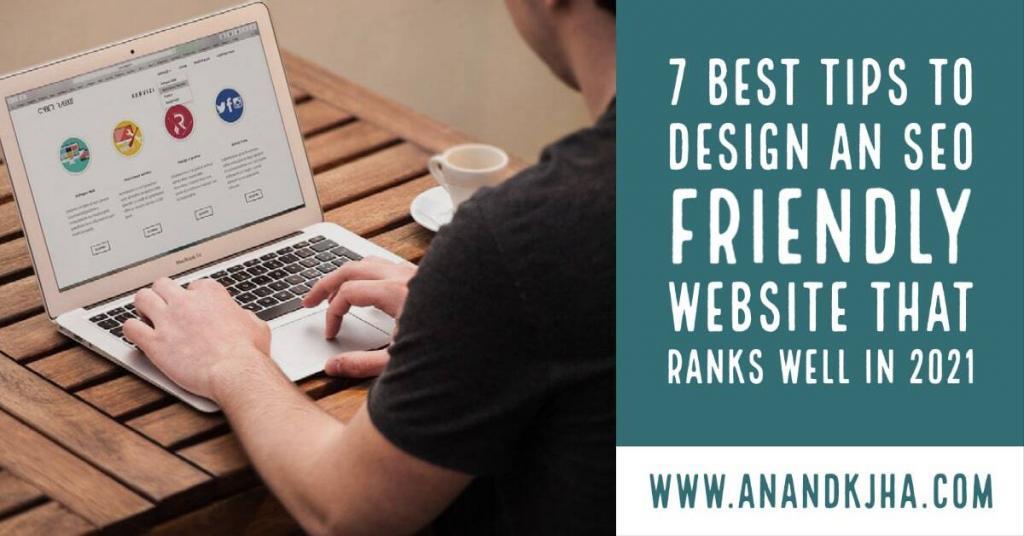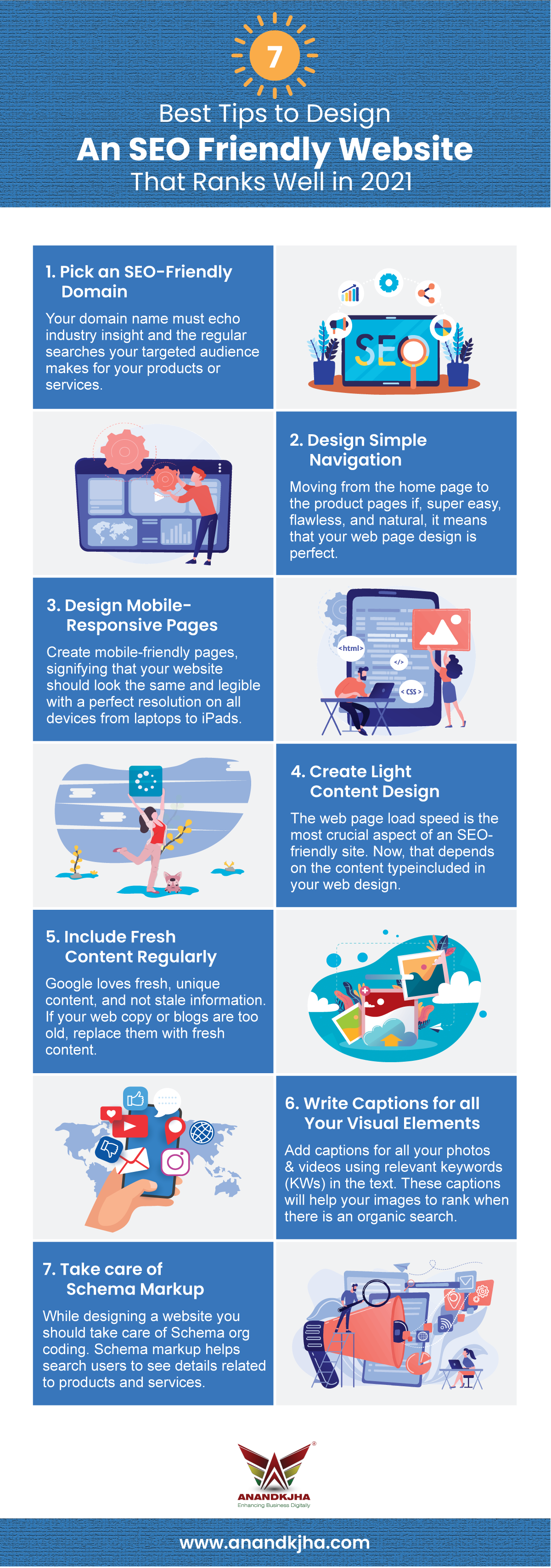
These days, websites have replaced physical stores and made shopping simpler for the online audience.
When it comes to an SEO-friendly website, it entails three essential elements such as website design, content, and competitor study.
Your business website requires optimization for Google for an enhanced customer experience.
A pleasing visitor experience is critical for ensuring loyalty as well as return buyers to your site.
An optimized web design makes content and web pages simpler to find on your site.
As far as good customer experience is concerned, it also helps as an endorsement.
When Google understands that users are spending more time on your web pages or visit the inner pages, your rankings will boost.
Here are some of the best ways to design an SEO-friendly website:
Table of Contents
#1 Pick an SEO-Friendly Domain
Your domain name must echo industry insight and the regular searches your targeted audience makes for your products or services.
For instance, if your website is about travel, pick a domain that’s related to travel and tourism services. When your potential clients can relate to your brand, your website becomes more trustworthy.
Choose a domain in a way to stand out from the rest in your niche industry. The name you select should look unique as well as motivate your customers to land on your home page.
#2 Design Simple Navigation (Site Architecture)
Why do people visit any website?
They want to access information related to products or services with ease and zero effort.
Studies show that visitors like websites where content is easy to access and consume.
Moving from the home page to the product pages if, super easy, flawless, and natural, it means that your web page design is perfect.
Make navigation simpler to provide visitors with a sitemap on your home page.
It helps online users to click any page link from the home page or landing page.
Design navigation menus that are easy to use, understand, and meander through your site.
#3 Design Mobile-Responsive Pages
These days, people access websites using multiple devices including PCs, laptops, smartphones, and iPads. They also use numerous operating systems as well as coding languages. Therefore, your site should let access via multiple devices without compromising on the information or content captured.
Create mobile-friendly pages, signifying that your website should look the same and legible with a perfect resolution on all devices from laptops to iPads. If you do not have a responsive website, your website will rank poorly in the search results.
#4 Create Light and Engaging Content Design
The web page load speed is the most crucial aspect of an SEO-friendly site. Now, that depends on the content type and design elements included in your web design.
When you include light images, your pages will load fast and improve the user experience. There are websites stunningly designed but have heavy photos or videos that make them slow loading, affecting SEO badly.
Use a content presentation style that helps your audience to mine information from the site with ease.
You can use titles, subheadings, and bold fonts to highlight significant information for your visitors. This way, people would spend more time on your website and return when they require additional information or content.
#5 Include Fresh Content Regularly
Google loves fresh, unique content, and not stale information. If your web copy or blogs are too old, replace them with fresh content. That is because Google will rank old articles or blogs poorly in the search results.
You need to hire seasoned copywriters to create fresh and engaging content. You can rewrite articles with new information for better website rankings. Make sure you give your web pages a new look, feel, and presentation when it comes to overall design and content.
#6 Write Captions or Alt Text for all Your Visual Elements
A lot depends on how Google spiders view your content, especially when it comes to ranking better in the SERPs. Then, the technology to read copy or text on photos or videos is not that improved.
Therefore, you need to work a little harder to let Google understand what your images signify. Add captions for all your photos and videos using relevant keywords (KWs) in the text. These captions will help your images to rank when someone does an organic search.
#7 Take care of Schema Markup
While designing a website you should take care of Schema org coding. Google officially states that Schema Markup helps bots to understand your services and products in detail. Also, schema markup helps search users to see details related to products and services in search results. Most of the developers skip this task.

Wrapping up
Now that you have these tips handy, implement them when you perk up your website design to make it optimized for Google and pleasing to the visitors.

I (Anandkjha) have 9+ years of experience in SEO & Digital Marketing. I love what I do. Besides expertise in SEO & PPC. I am an engineer who has a bachelor’s degree in aeronautics. I love to help entrepreneurs and NGOs. Customer satisfaction is my award and I always strive to achieve this.